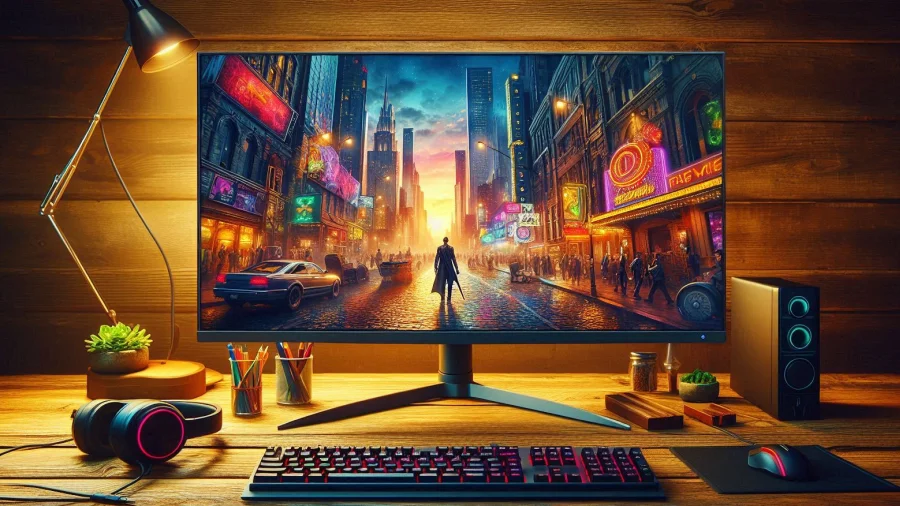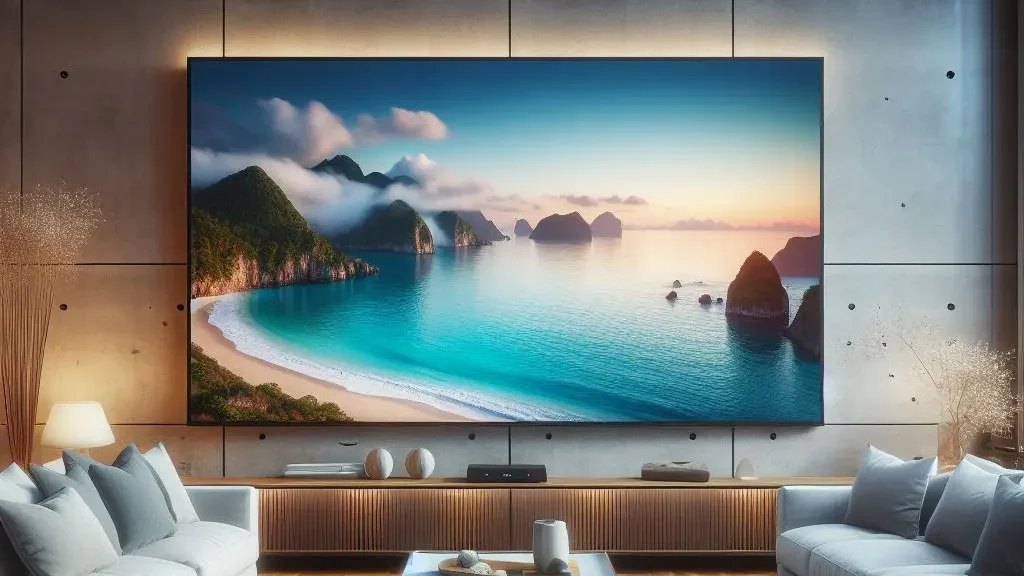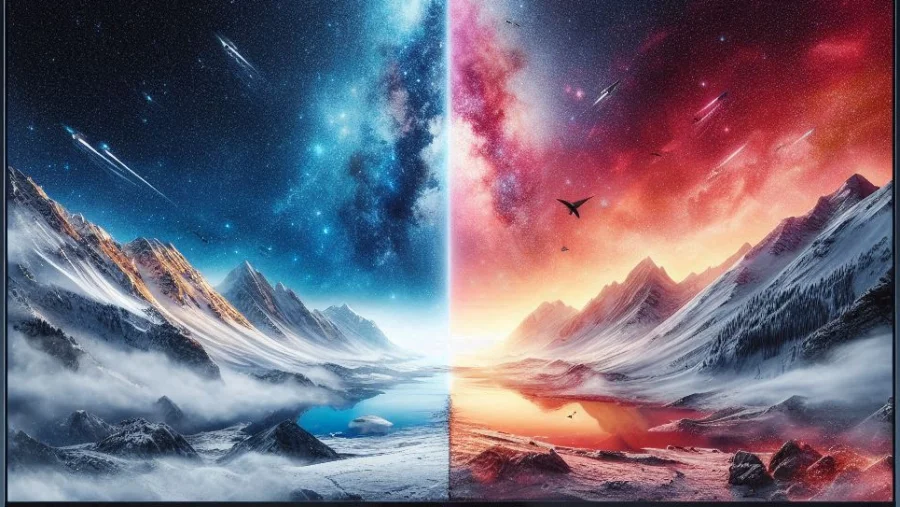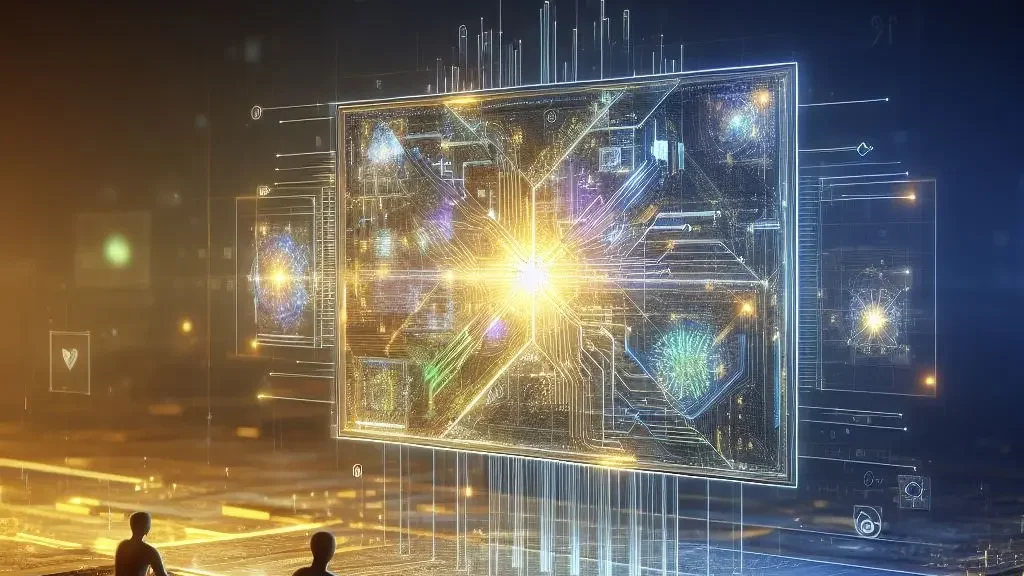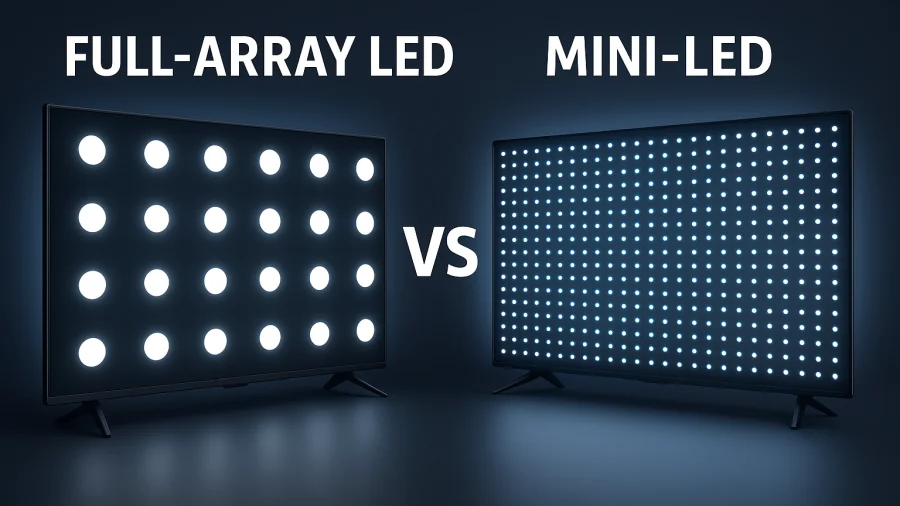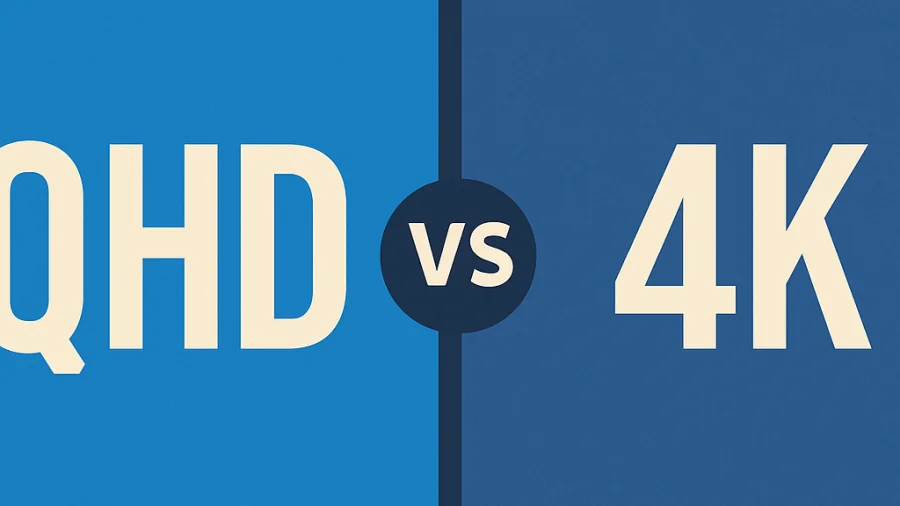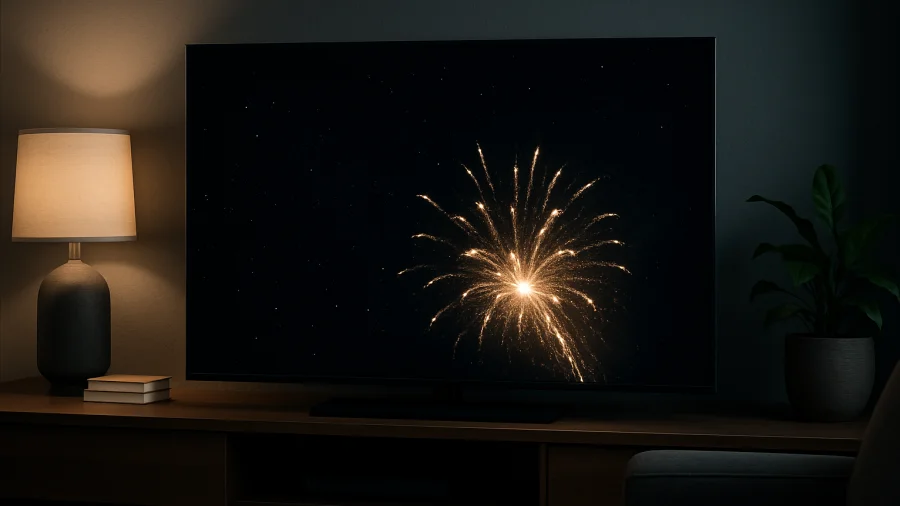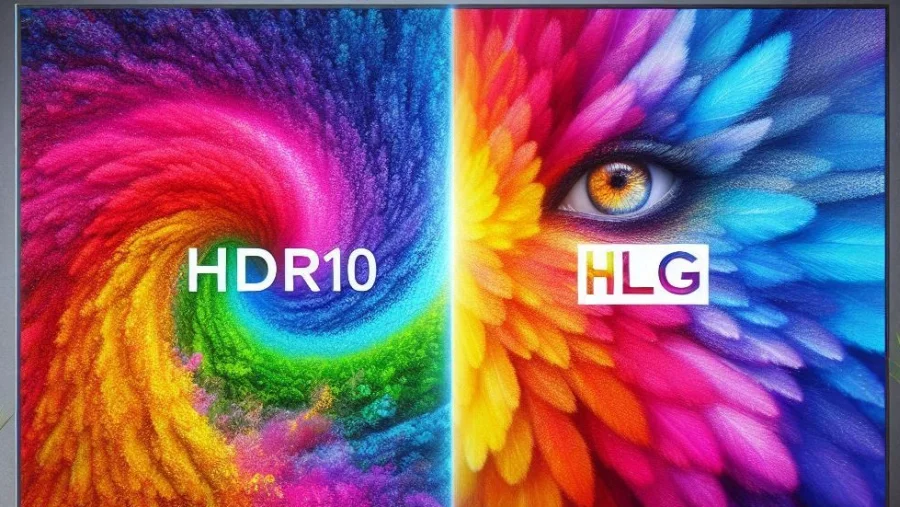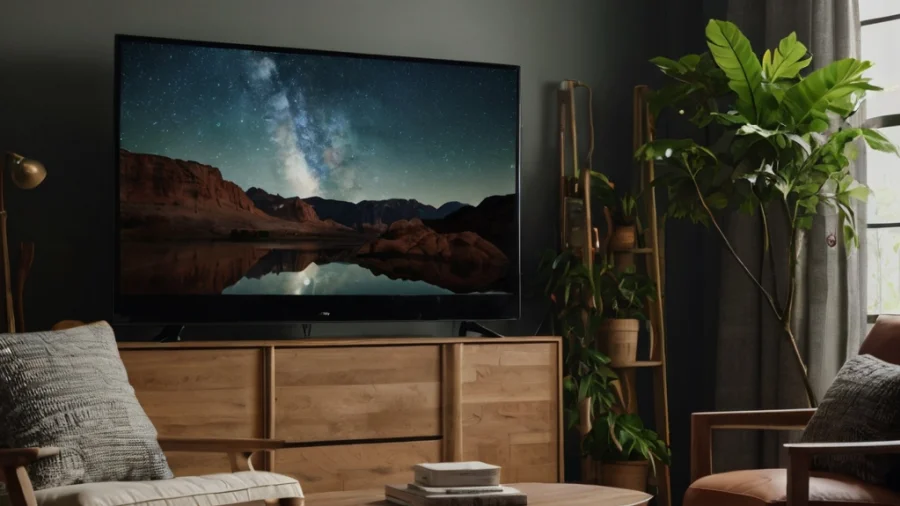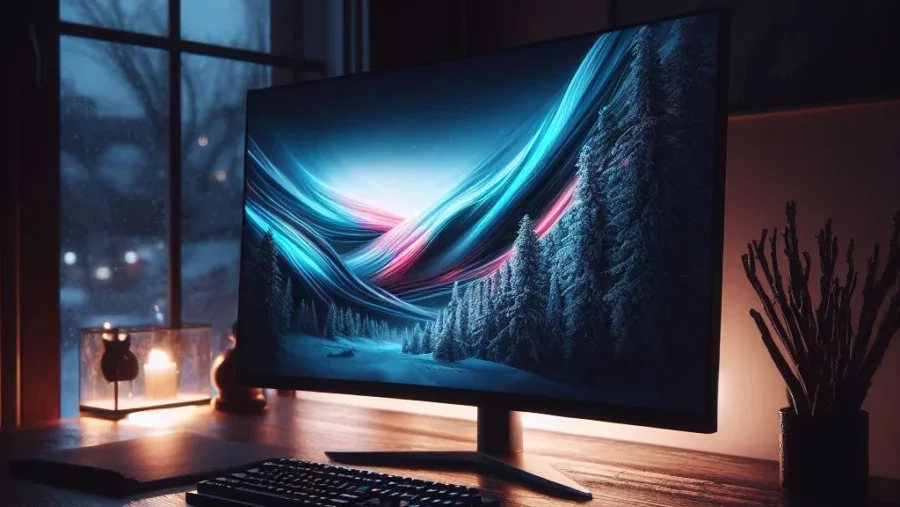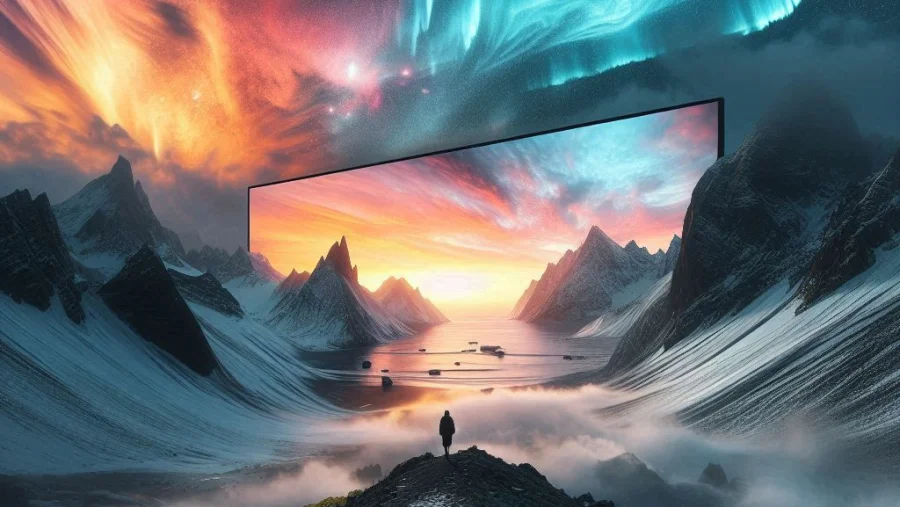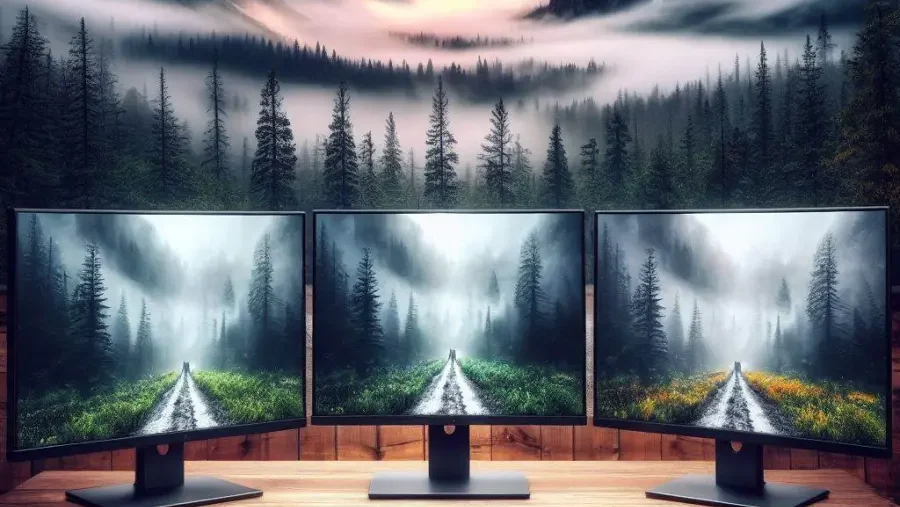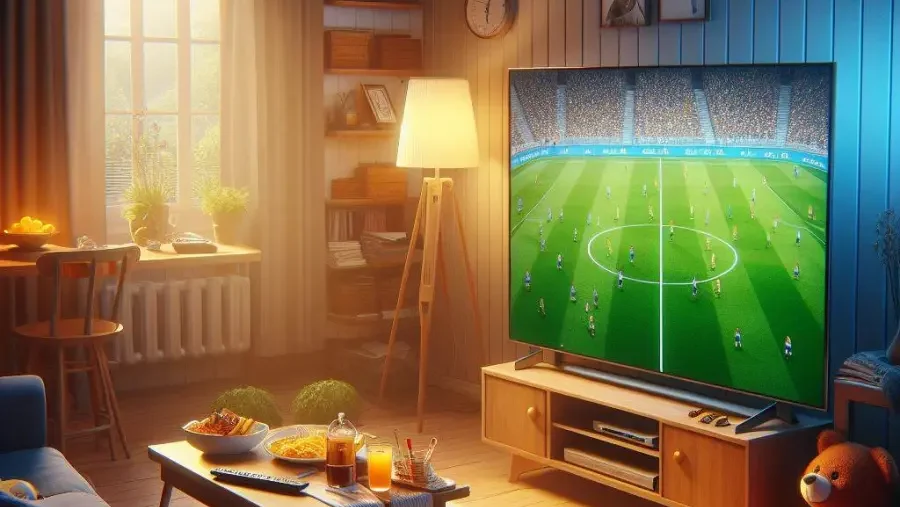
Hybrid Log–Gamma (HLG) is a transfer function that allows the encoding and display of high dynamic range (HDR) video content.
HDR video has a higher contrast and a wider range of colors than standard dynamic range (SDR) video, which can enhance the realism and immersion of the viewing experience.
HLG was developed jointly by the BBC and NHK, two public broadcasters from the UK and Japan, respectively. HLG was first proposed in 2015 and has since been adopted by several standards and technologies in the broadcasting and display industry.
Technical Overview
The HLG transfer function is based on the logarithmic curve that is used to encode luminance in digital cameras.
The logarithmic curve can capture a wide range of brightness levels, from very dark to very bright, without losing details or introducing noise.
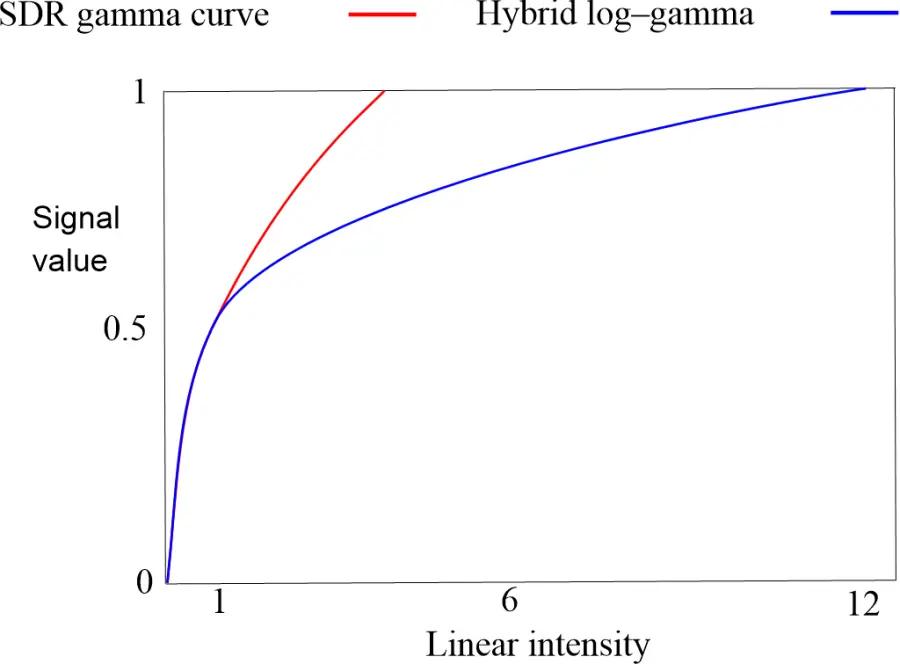
However, the logarithmic curve is not suitable for displaying video on conventional SDR displays, which have a limited brightness range and use a gamma curve to map the input signal to the output luminance.
Therefore, HLG uses a hybrid approach that combines the logarithmic curve for the upper part of the signal range and the gamma curve for the lower part of the signal range.
This way, HLG can encode HDR video with a high peak brightness and a wide color gamut, while also maintaining backward compatibility with SDR displays.
The backward compatibility of HLG with SDR means that the same HLG signal can be displayed on both HDR and SDR displays without the need for metadata or signal conversion.
On an HDR display, the HLG signal can be decoded and displayed according to the native capabilities of the display, such as the peak brightness, the black level, and the color gamut.
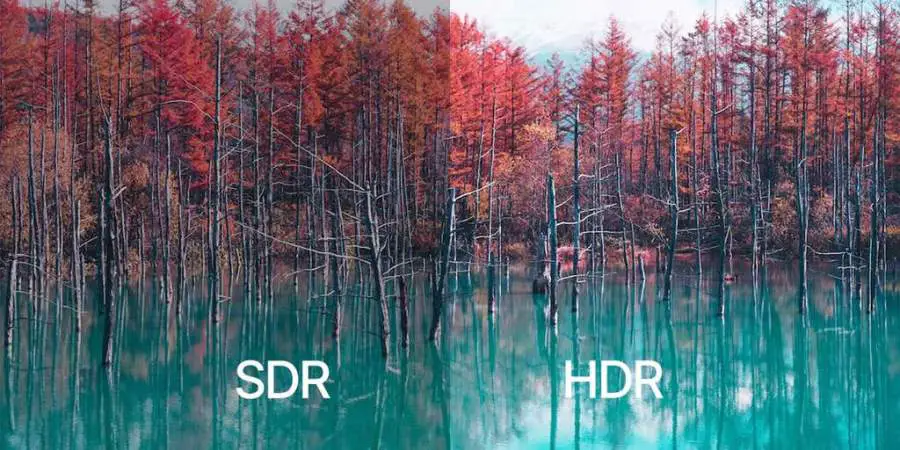
On an SDR display, the HLG signal can be displayed as if it were a conventional SDR signal, without any significant loss of quality or contrast. This feature of HLG simplifies the production and distribution of HDR content, as it eliminates the need for separate HDR and SDR versions of the same content.
Applications and Usage
Hybrid Log–Gamma is mainly designed for the broadcasting and streaming of HDR content, as it offers a convenient and efficient way to deliver HDR video to a wide range of displays.
HLG is also suitable for live HDR production, as it does not require any metadata or dynamic tone mapping, which can introduce latency or artifacts.
It can be also used for HDR content creation, as it can capture the natural variations of light in different scenes and environments.
HLG has been approved by the Association of Radio Industries and Businesses (ARIB) as the standard HDR format for broadcasting in Japan.
ARIB STD-B67 defines the technical specifications and parameters of HLG, such as the color space, the bit depth, the frame rate, and the audio format.
HLG has also been defined in several international standards for HDR video, such as ATSC 3.0, Digital Video Broadcasting (DVB) UHD-1 Phase 2, and International Telecommunication Union (ITU) Rec. 2100.
These standards specify the use of HLG for different applications and regions, such as terrestrial, satellite, cable, and online broadcasting.
HLG Format and Compatibility
The HLG format is based on the BT.2020 color primaries, which define the color gamut of HDR video.
The BT.2020 color gamut is much wider than the BT.709 color gamut, which is used for SDR video.
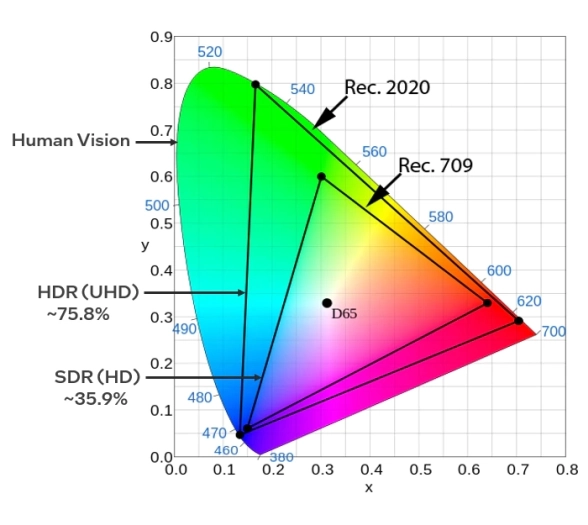
The HLG format also uses a bit depth of 10-bit, which means that each color channel can have 1024 levels of intensity, compared to 256 levels for 8-bit SDR video. The higher bit depth allows for smoother gradations and less banding in HDR video.
The HLG format is backward compatible with SDR UHDTV, which is the standard format for 4K video. SDR UHDTV also uses the BT.2020 color primaries and a bit depth of 10-bit, but with a different transfer function than HLG.
Therefore, an HLG signal can be displayed on an SDR UHDTV display without any format conversion or scaling. However, the HLG signal will not be displayed as HDR, but as SDR, with a reduced contrast and color range.
The HLG format is not fully compatible with traditional SDR displays, such as HD or SD displays, which use the BT.709 color primaries and a bit depth of 8-bit.
To display an HLG signal on a traditional SDR display, some processing is required, such as color conversion, tone mapping, and bit depth reduction.
These processes can introduce some errors or distortions in the displayed image, such as color clipping, desaturation, or noise. Therefore, the quality and accuracy of the HLG signal on a traditional SDR display may vary depending on the display characteristics and the processing methods.
Advantages of HLG
One of the main advantages of Hybrid Log–Gamma is that it is a royalty-free transfer function and format, which means that it can be used and implemented without any licensing fees or restrictions.
This makes HLG more accessible and affordable for content creators, broadcasters, and consumers, compared to other HDR formats that may require royalties or patents. HLG also reduces the complexity and cost of HDR production and distribution, as unlike other HDR formats it does not require any metadata, or signal conversion for different display types.
Another advantage of HLG is that it offers backward compatibility with SDR displays, which means that it can reach a larger and more diverse audience of viewers.
Backward compatibility also benefits equipment manufacturers and content distributors, as it allows them to use the same infrastructure and devices for both HDR and SDR content, without the need for upgrades or modifications.
Backward compatibility also preserves the artistic intent and quality of the HDR content, as it does not rely on dynamic tone mapping or metadata, which can alter the appearance or consistency of the HDR video.
Support and Implementation
HLG is supported by various technologies and services that enable the creation, transmission, and display of HDR video. Some of the technologies and services that support HLG are:
- HDMI 2.0b: HDMI interface since 2.0b version allows the transmission of HLG signals between devices, such as cameras, players, and displays.
- HEVC: The most widely used video compression standard for HDR video, which supports the encoding and decoding of HLG signals with high efficiency and quality.
- VP9: An alternative video compression standard for HDR video, which also supports the encoding and decoding of HLG signals, especially for online streaming platforms.
- H.264/MPEG-4 AVC: The most popular video compression standard for SDR video, which can also be used to encode and decode HLG signals, with some limitations and trade-offs.
- BBC iPlayer: The online streaming service of the BBC, which offers HDR content in HLG format, such as documentaries, dramas, and sports.
- DirecTV: The satellite television service provider in the US, which broadcasts HDR content in HLG format, such as movies, shows, and events.
- Freeview Play: The hybrid digital television platform in the UK, which streams HDR content in HLG format, such as catch-up and on-demand programs.
- YouTube: The largest online video platform in the world, which supports the uploading and streaming of HDR content in HLG format, such as user-generated and professional videos.
Conclusion
Hybrid Log–Gamma is a transfer function and format that enables the encoding and display of HDR video content, which has a higher contrast and a wider range of colors than SDR video content.
HLG was developed by the BBC and NHK, and has been adopted by several standards and technologies in the broadcasting and display industry.
It has several advantages, such as being royalty-free, backward compatible, and simple to use. HLG is supported by various technologies and services that allow the creation, transmission, and display of HDR video.
Hybrid Log–Gamma Q&A
What is the difference between HLG and Dolby Vision?
Dolby Vision is another HDR format that uses a different transfer function and format than HLG. Dolby Vision uses a perceptual quantizer (PQ) curve, which is based on the human visual system, to encode HDR video with a peak brightness of up to 10,000 nits. Dolby Vision also uses dynamic metadata, which provides information about the characteristics and preferences of the HDR display, to optimize the tone mapping of the HDR video. It is a proprietary format that requires licensing fees and patents, and is not backward compatible with SDR displays.
How can I watch HLG content on my TV?
To watch HLG content on your TV, you need to have an HDR TV that supports the HLG format, and a source device that can output the HLG signal, such as a camera, a player, or a set-top box. You also need to have an HDMI 2.0b cable that can transmit the HLG signal between the source device and the TV. You can also watch HLG content on your TV through online streaming platforms, such as BBC iPlayer, DirecTV, Freeview Play, and YouTube, if your TV has an internet connection and supports the HLG format.
How can I create HLG content with my camera?
To create HLG content with your camera, you need to have a camera that supports the HLG format, and a memory card that can store the HLG video. You also need to set the camera to the HLG mode, which will apply the HLG transfer function and the BT.2020 color primaries to the captured video. You can then edit and export the HLG video with a video editing software that supports the HLG
What is the difference between HLG and HDR10?
HLG and HDR10 are two different HDR solutions that use different transfer functions and formats. HLG uses the HLG transfer function and the HLG format, which are backward compatible with the SDR displays and independent of the display characteristics.
HDR10 uses the PQ transfer function and the HDR10 format, which require metadata and signaling to indicate the display characteristics and are not backward compatible with the SDR displays.
What is the difference between HLG and PQ?
HLG and PQ are two different transfer functions for HDR video. HLG is a hybrid function that combines a logarithmic curve and a linear curve, and it is backward compatible with SDR displays.
PQ is a non-linear function that allocates more bits to the darker regions and less bits to the brighter regions, and it requires metadata to indicate the peak brightness of the content.
Read Next
